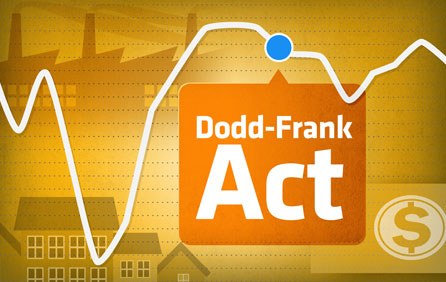repost from: http://www.bloombergview.com/articles/2014-07-20/dodd-frank-s-four-years-of-doing-nothing
Four years after President Barack Obama signed the Dodd-Frank Wall Street Reform and Consumer Protection Act into law, polling suggests that most Americans think it hasn’t done enough to protect them from a repeat of the 2008 financial crisis, a disaster from which the global economy has yet to fully recover.
Unfortunately, they’re right.
At its core, the Dodd-Frank Act was supposed to work like a three-stage containment system. Better monitoring and limits on risk-taking would make accidents less likely to happen. If financial institutions did get into trouble, added capital would make them more likely to survive. If they nonetheless failed, advance planning and new resolution mechanisms would allow them to do so without bringing down the broader financial system and the economy.
Despite all the progress regulators have made, they have yet to complete any level of this fail-safe system.
At the first stage, the Volcker Rule prevents deposit-taking banks from engaging in the kind of speculative trading that can precipitate sudden losses, and the Federal Reserve’s stress tests help ensure that large banks are prepared for the most obvious risks. Poor global coordination and data difficulties, however, have left regulators woefully far from their goal of creating an early warning system that could, in anything close to real time, tell them where the risks in the financial system are concentrated. If, for example, a big U.S. hedge fund were heavily invested in foreign banks that were about to be wiped out by losses in emerging markets, nobody would see the whole picture.
At the second stage, U.S. regulators have set capital requirements for bank holding companies at $5 for every $100 in assets, enough to absorb a 5 percent loss. That’s more than most had heading into the last crisis, but still much less than what research and experience suggest is needed. Economists at New York University estimate that the six largest U.S. banks are almost $300 billion short of the capital they would need to survive a severe crisis. Other institutions that act like banks, including a large share of money-market mutual funds, still face no capital requirements at all.
At the third stage, regulators have made much of what they call the orderly liquidation authority, which allows the Federal Deposit Insurance Corp. to swoop in, take over and recapitalize a failing bank holding company, all the while keeping its systemically important subsidiaries running as if nothing were amiss. The mechanism, though, remains untested, and even the FDIC’s own vice chairman doubts it could handle a crisis like that of 2008, when several large banks were in trouble simultaneously. Meanwhile, regulators have so far tolerated banks’ inability to produce convincing “living wills,” in which they are supposed to show how they could be safely dismantled through the bankruptcy process.
Markets have already offered their verdict on the success of Dodd-Frank: Various studies show that creditors lend money more cheaply to the largest banks, on the assumption that the government will have to rescue them in an emergency just like it did in 2008 and 2009. The International Monetary Fund has estimated that this implicit taxpayer subsidy was worth as much as $70 billion a year in 2011 and 2012.
Dodd-Frank provides regulators with all the powers they need to prevent the financial sector from leaning on taxpayers and putting the economy in danger. All that’s wanting, four years on, is the will to use them.
To contact the senior editor responsible for Bloomberg View’s editorials: David Shipley at davidshipley@bloomberg.net.









